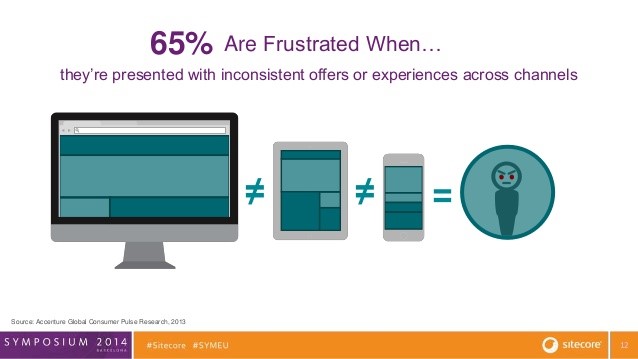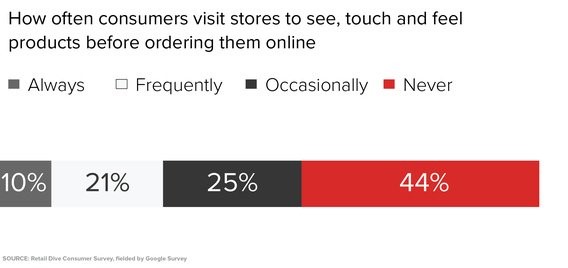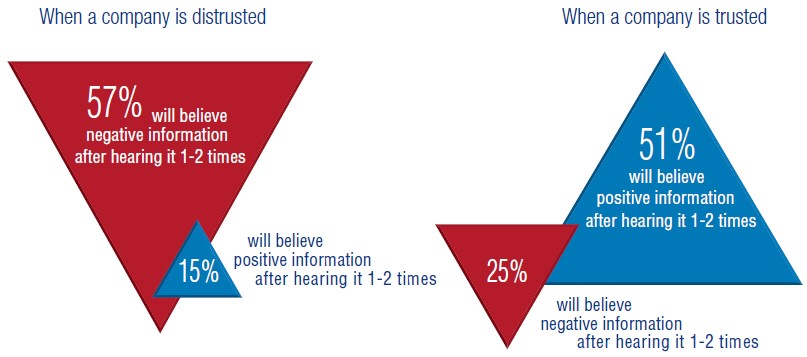Creating a single standout customer experience (CX) may get a customer’s attention—but does it win their loyalty? Not always. Companies that have made progress along the CX path recognize that delivering consistent experiences across multiple interactions helps fortify customer loyalty.
Fostering consistency in experiences is becoming essential as customers use multiple channels to engage with brands.
According to 2017 research from Forrester, 95% of customers use three or more channels to connect with a company in a single service interaction, with 62% using more than one device. And Accenture research has found that 65% of customers expressed frustration over inconsistent experiences or information presented across channels.
Image Source: SlideShare
As you build and evolve your CX practices, you need to avoid frustrations that can drive customers away. You need to know that multi-channel experiences are the new norm.
By understanding recent shifts in the customer buying landscape and the multiple dimensions of CX consistency, you can design the right approaches to develop lasting relationships with your customers.
Customer Buying Habits Are Changing
Consumer buying habits today are radically different from what they were a few decades ago. With limited opportunities for comparative research, consumers would often consistently buy from a recognized brand name—even as other appealing options appeared in the marketplace. They tended to stay loyal to a preferred brand over the long-term.
Today, consumers are more likely to conduct research—and consider multiple brands or products–before making purchases. A recent study found that two-third of customers research products online before shopping for them in a brick-and-mortar store. Over half follow this research online, buy offline process frequently or every time they shop.
Many consumers do the reverse as well. In the same study, more than half of surveyed consumers said they will go to a store location to see products in person before buying them online.
Image Source: Retail Dive
This customer tendency to conduct research and explore buying opportunities across multiple channels can lead to less loyalty to any specific brand.
Companies can address this trend by focusing on consistency across various channels—including brick-and-mortar, online, and other digital channels. They can aim to make experiences easy and consistent, while using technology to support personalization. With the right approaches, consumers can feel that their multi-faceted buying process add up to a comprehensive and positive experience that encourages them to remain loyal to a brand.
Consistency Matters Across Multiple Dimensions
This shifting buying landscape underscores the importance of focusing on fostering consistent experiences across multiple channels. In fact, according to consulting firm McKinsey, consistency is a critical element of a CX program—and one that deserves the attention of top leadership.
As McKinsey explains, customers tend not to engage in single, discrete interactions with a company—but are more likely to create “clusters” of interactions. These multi-part engagements form the cumulative experience a customer has with a brand.
McKinsey advises companies to address CX consistency across three domains:
- Customer Journey Consistency
- Emotional Consistency
- Communications Consistency
Customer-Journey Consistency
Since many customer experiences involve multiple interactions, companies need to pay careful attention to the cumulative experience—not just the individual components. As McKinsey explains:
Simple math illustrates why this is so important in a world of increasingly multichannel, multitouch customer journeys. Assume a customer interacts six times with a pay-TV company, starting when he or she undertakes online research into providers and ending when the first bill is received 30 days after service is installed. Assuming a 95 percent satisfaction rate for each individual interaction—whether measuring responsiveness, the accuracy of information, or other factors—even this level of performance means that up to one in four customers will have a poor experience during the on-boarding journey.
It’s not enough to deliver a single standout interaction—or even good service across most steps in a single customer journey. If one interaction falls short, the customer is likely to have a negative perspective about the total experience—and those negative perceptions can be hard to overcome.
Emotional Consistency
Customers want to have positive feelings about the brands they choose. They also want to trust the companies that earn their business.
Trust and consistency go hand-in-hand. In fact, McKinsey’s research in the financial found that brands that cultivated the strongest feelings of trust were more likely to deliver consistent customer journeys.
Cultivating trust can have far-reaching impacts on a business. According to the Edelman Trust Barometer, when customers trust companies, they are more likely to believe positive information about the company—and the opposite is true for companies they distrust.
Image Source: Clear Action CX
Companies that cultivate trust can benefit from positive word-of-mouth shared by loyal customers—that can ultimately help bring more new customers to the business.
Communication Consistency
Companies deliver promises through all their marketing communications. Interactions with customers can either validate those promises or undermine them. If a customer perceives a disconnect between what a company says they value and the experiences they deliver—that can damage a customer’s perception of the brand.
When a company has a clearly-defined promise, and delivers on it over time, the positive goodwill generated with customers is very powerful.
Consistency Brings Loyalty, Loyalty Brings Revenues
Creating consistency across the multiple dimensions of the customer experiences can require a shift and thinking—and operational change—but the dividends are worth the effort. According to a multi-industry study from CX research firm, the Temkin Group, customer experience leaders build a devoted customer following:
Customer experience leaders enjoy a double-digit advantage in customers willing to buy more from them, reluctant to switch business away from them, and likely to recommend them.
The Temkin Group research also found that even modest gains in customer experience can drive significant revenue increases in certain sectors.
However, if a company chooses not to focus on delivering strong customer experiences, they risk losing customers. One study found that 42% of U.S. customer stop shopping with a brand after just two bad experiences—and nearly 75% of customers contacted a company for support per in a single year.
Your company can’t rely on brand name alone to earn customers’ loyalty. Instead, you need to focus on delivering strong customer experiences—across the varied channels your customers use to interact with your business.
Author: Connie Harrington
Connie is a content strategist and serves as managing editor of the eTouchPoint blog. Possessing 15+ years of international experience across five continents, her focus areas include: customer experience management, customer contact management, communications planning, content marketing, email marketing, and employee engagement. Previously, she held marketing and communications leadership positions at CGI, Mindwrap, and TEOCO. She earned a B.A., cum laude, from the College of William and Mary in Virginia.





